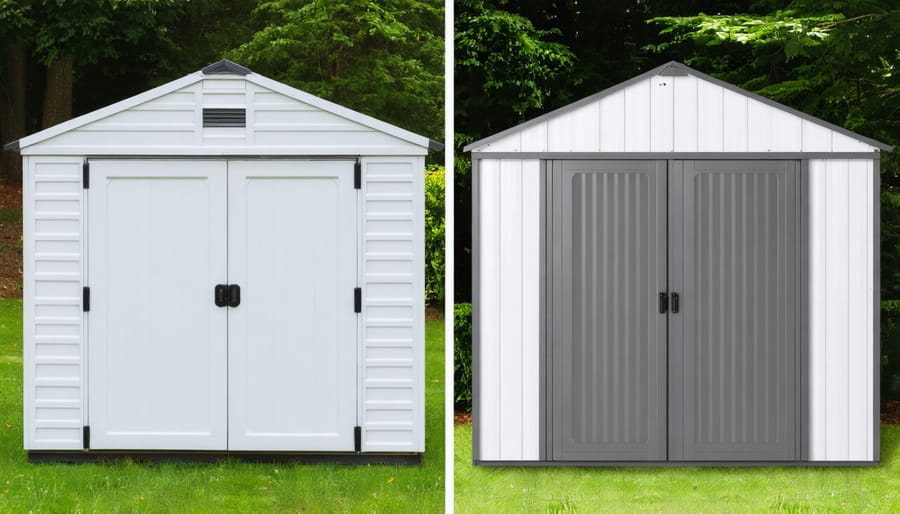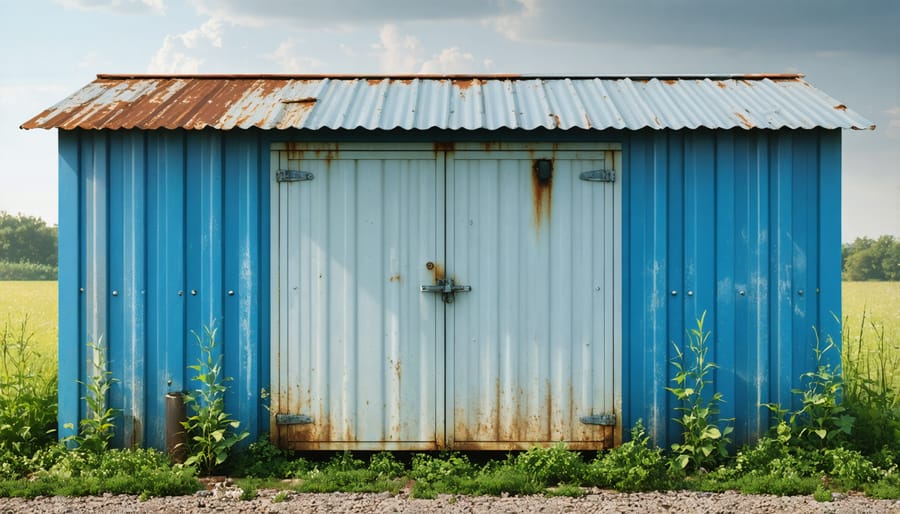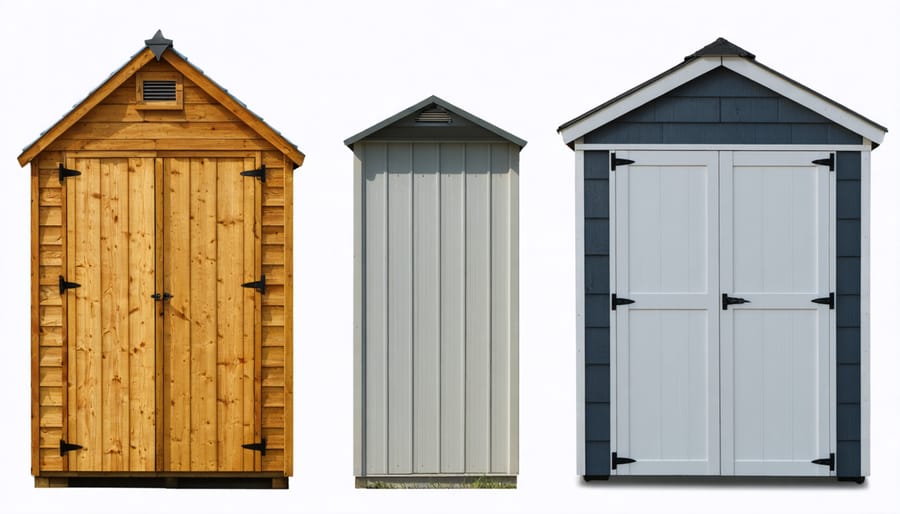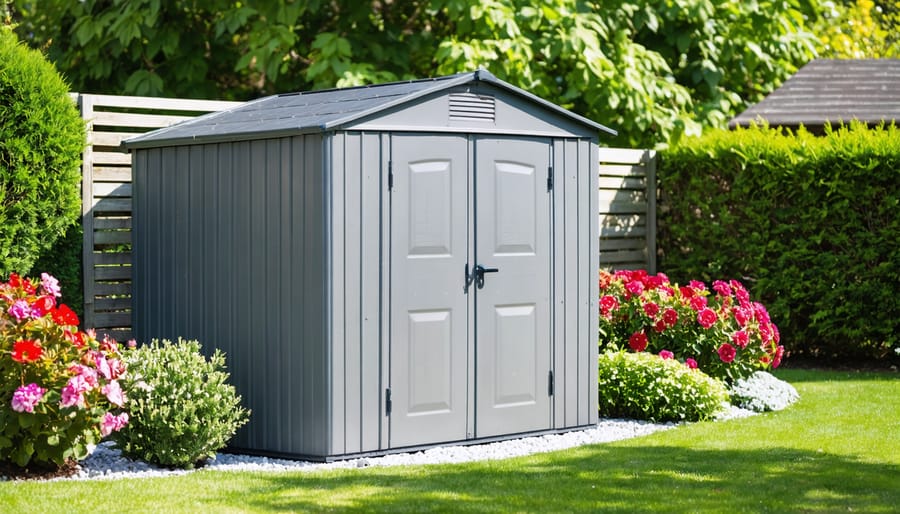Plastic sheds offer homeowners a durable, low-maintenance storage solution that can last up to 20 years or more with proper care. While not as long-lasting as metal or wood, plastic sheds are resistant to rot, rust, and insect damage – making them an attractive option for those seeking a balance of affordability and longevity. Factors like UV exposure, extreme temperatures, and heavy snow loads can impact the lifespan of a plastic shed, but regular cleaning, prompt repair of cracks or damage, and using a UV-resistant sealant can help maximize durability. With their combination of resilience, easy upkeep, and budget-friendly price point, plastic sheds provide a practical choice for long-term outdoor storage needs.
Factors Affecting Plastic Shed Lifespan
Quality of Materials
The quality and type of plastic used in a shed’s construction play a significant role in determining its durability and longevity. High-quality plastics, such as high-density polyethylene (HDPE) and polypropylene (PP), are known for their strength, weather resistance, and ability to withstand impacts. These materials are often used in premium vinyl sheds, ensuring a longer lifespan compared to sheds made from lower-grade plastics. Additionally, UV-stabilized plastics help prevent discoloration and degradation caused by prolonged sun exposure. Thicker plastic panels and reinforced structures also contribute to the overall durability of the shed. When shopping for a plastic shed, it’s essential to consider the quality of the materials used, as this will directly impact how long the shed will last and how well it will withstand the elements and everyday use.

Environmental Conditions
Environmental conditions play a significant role in determining the lifespan of a plastic shed. Exposure to direct sunlight can cause the plastic to fade, become brittle, and crack over time. UV-resistant coatings can help mitigate this effect, but it’s still essential to consider the shed’s placement in your yard. Rain and snow can also impact the longevity of a plastic shed, particularly if water accumulates on the roof or seeps into the structure. Proper drainage around the shed and regular inspections for leaks can help prevent water damage. Weatherproofing measures, such as applying sealants to the seams and edges, can further enhance the shed’s resistance to moisture. Extreme temperatures, both hot and cold, can cause the plastic to expand and contract, potentially leading to warping or cracking. While plastic sheds are generally designed to withstand a wide range of temperatures, it’s crucial to choose a model that is suitable for your local climate. By understanding how environmental factors affect your plastic shed and taking appropriate precautions, you can help extend its lifespan and ensure it remains a reliable storage solution for years to come.

Proper Maintenance
Proper maintenance is key to maximizing the lifespan of your plastic shed. Regular cleaning with mild soap and water helps prevent the buildup of dirt, grime, and mildew that can degrade the material over time. It’s also crucial to address any cracks or damage promptly to avoid further deterioration. Applying a UV-resistant sealant every few years can help protect the plastic from sun damage and fading. Additionally, regular upkeep tasks such as clearing debris from the roof and ensuring proper drainage around the shed’s foundation can prevent unnecessary wear and tear. By following these simple maintenance steps, you can significantly extend the life of your plastic shed, ensuring it remains a durable and attractive storage solution for years to come. Remember, a little TLC goes a long way in preserving the functionality and appearance of your backyard storage space.
Average Lifespan of Plastic Sheds
Low-End Plastic Sheds
Lower-end plastic sheds, while more affordable, typically have a shorter lifespan compared to their higher-quality counterparts. These sheds are often made from thinner, less durable plastics and may not withstand the test of time as well. On average, you can expect a low-end plastic shed to last between 5 to 7 years with proper care and maintenance. However, exposure to harsh weather conditions, UV rays, and frequent use can reduce this lifespan. If you’re on a tight budget, a low-end shed can still provide a temporary storage solution, but keep in mind that you may need to replace it sooner than a more durable option.
High-End Plastic Sheds
For those seeking the ultimate in durability and longevity, premium plastic sheds are an excellent choice. Constructed from high-quality, UV-resistant materials and featuring reinforced designs, these sheds can withstand the harshest weather conditions. With proper care and maintenance, a high-end plastic shed can last between 15 and 25 years or more, providing a reliable storage solution for decades. While they may come with a higher price tag, investing in a top-tier plastic shed can offer peace of mind and long-term value for homeowners who want the best in outdoor storage.
Real-Life Examples
John from Seattle shares, “My plastic shed has held up remarkably well for over 12 years now. It’s been through harsh winters and hot summers without any issues.” Lisa, a homeowner in Florida, says, “I’ve had my plastic shed for about 8 years, and it still looks nearly new. It’s been a great investment for storing my garden tools and supplies.” Tom, a DIY enthusiast from Chicago, adds, “I bought a high-quality plastic shed 10 years ago, and it’s still going strong. Regular cleaning and occasional tightening of the hardware have kept it in top shape.”

Comparison to Other Shed Materials
Wooden Sheds
While plastic sheds offer durability and low maintenance, wooden sheds have been a traditional choice for their classic aesthetics and sturdy construction. However, wood requires more upkeep to maintain its integrity and appearance over time. Without regular sealing, staining, or painting, wooden sheds are susceptible to weathering, warping, and rotting, especially in humid or wet climates. With proper care, a well-built wooden shed can last 15-20 years or more, but they may not withstand extreme weather events as well as plastic sheds. Ultimately, the longevity of a wooden shed depends on the quality of materials, construction, and the level of maintenance provided. For those seeking a storage solution that offers both durability and a natural look, a combination of materials, such as a plastic shed with wooden accents, may provide the best of both worlds.
Metal Sheds
While plastic sheds offer many benefits, metal sheds are another popular option for outdoor storage. Metal sheds are known for their durability and long lifespan, often lasting 20-30 years or more with proper maintenance. They are resistant to rot, insects, and fire, making them a secure choice for storing valuable items. However, metal sheds can be prone to rusting and denting, especially in harsh weather conditions. In comparison, plastic sheds are more lightweight, easy to assemble, and resistant to rust and corrosion. They also offer greater flexibility in terms of design and color options. Ultimately, the choice between a plastic or metal shed depends on your specific needs, budget, and aesthetic preferences.
Vinyl Sheds
When comparing plastic and vinyl sheds, it’s important to note that vinyl is a type of plastic, but with some key differences. Vinyl sheds are generally more durable and weather-resistant than other plastic sheds due to their higher-quality construction and materials. Vinyl is less prone to fading, cracking, or becoming brittle over time when exposed to sunlight and extreme temperatures. This increased durability often translates to a longer lifespan for vinyl sheds compared to those made from other plastics like polypropylene or polyethylene. However, this enhanced performance usually comes with a higher price tag. Ultimately, both plastic and vinyl sheds can provide long-lasting storage solutions, but vinyl’s superior durability may make it a better investment for those seeking a shed that will stand the test of time with minimal maintenance.
Maximizing Your Plastic Shed’s Lifespan
Installation Tips
When installing your plastic shed, proper site selection and preparation are crucial for maximizing its lifespan. Choose a level, well-draining area that’s not prone to flooding or excessive moisture. Clear the site of debris, roots, and rocks, and consider laying a gravel or concrete foundation for added stability and to prevent the shed from sinking over time. Ensure there’s enough space around the shed for maintenance and ventilation. If possible, position the shed in a shaded area to minimize UV exposure, which can degrade plastic over time. Properly anchoring your shed to the foundation is also essential to prevent shifting or damage from strong winds. Taking these steps during installation can help your plastic shed last longer and remain a functional, attractive storage solution for years to come. For more information on this, you may find guidance in the post on the best foundation for a shed.
Maintenance and Repairs
To keep your plastic shed in top shape and extend its lifespan, regular maintenance and timely repairs are crucial. One of the easiest ways to maintain your shed is by cleaning it periodically. Use a mild detergent, warm water, and a soft-bristled brush to gently scrub away dirt, debris, and any mildew or algae growth. Rinse thoroughly with a garden hose and allow the shed to air dry completely.
Inspect your shed routinely for any signs of damage, such as cracks, holes, or loose panels. If you spot any minor issues, address them promptly to prevent further deterioration. Many plastic sheds come with repair kits that include materials like adhesives, patches, and sealants, making it simple for DIY enthusiasts to tackle small fixes.
To protect your shed from the elements and extend its life, consider applying a UV-resistant protectant or sealant. These products help shield the plastic from sun damage, fading, and cracking. Regularly trim any overhanging branches and keep the area around your shed clear of debris to minimize the risk of impact damage.
If your shed has windows, ensure they are properly sealed to prevent leaks and moisture intrusion. Replace any damaged or missing hardware, such as hinges, locks, or handles, to maintain the shed’s functionality and security. For tips on window installation, check out how to install a window in a shed.
By following these simple maintenance and repair tips, you can help your plastic shed withstand the test of time and continue providing reliable storage space for years to come. With a little care and attention, your shed will remain an attractive and functional addition to your outdoor space.
Conclusion
In conclusion, plastic sheds can offer a durable and long-lasting storage solution for your home, with lifespans ranging from 10 to 25 years or more with proper care. When shopping for a shed, consider not only the initial cost but also the material’s durability and low maintenance requirements. While metal and wooden sheds have their advantages, plastic stands out for its resistance to weathering, pests, and rot. By following simple maintenance tips like regular cleaning and prompt repair of any damage, you can maximize the lifespan of your plastic shed and enjoy its benefits for years to come.





Leave a Reply